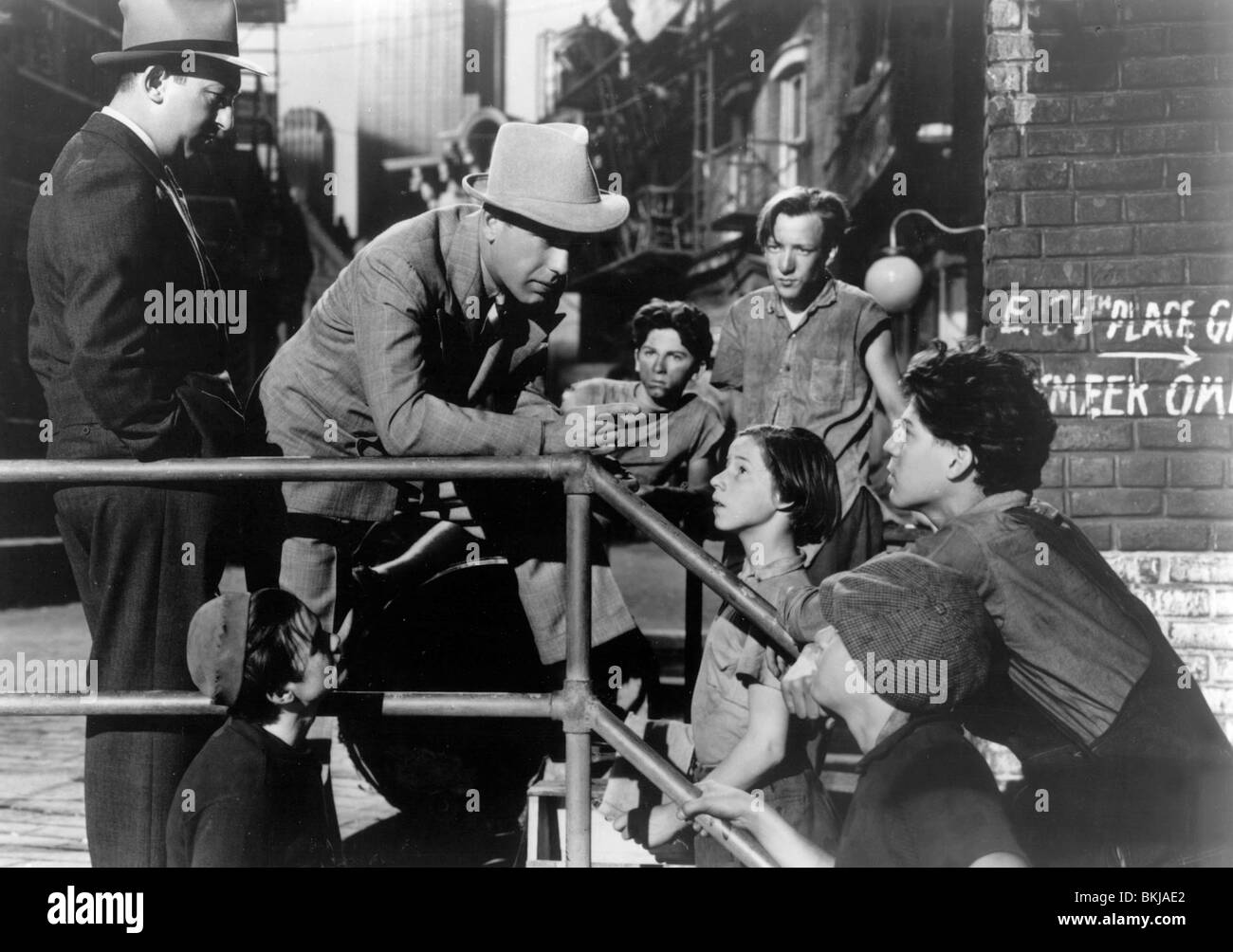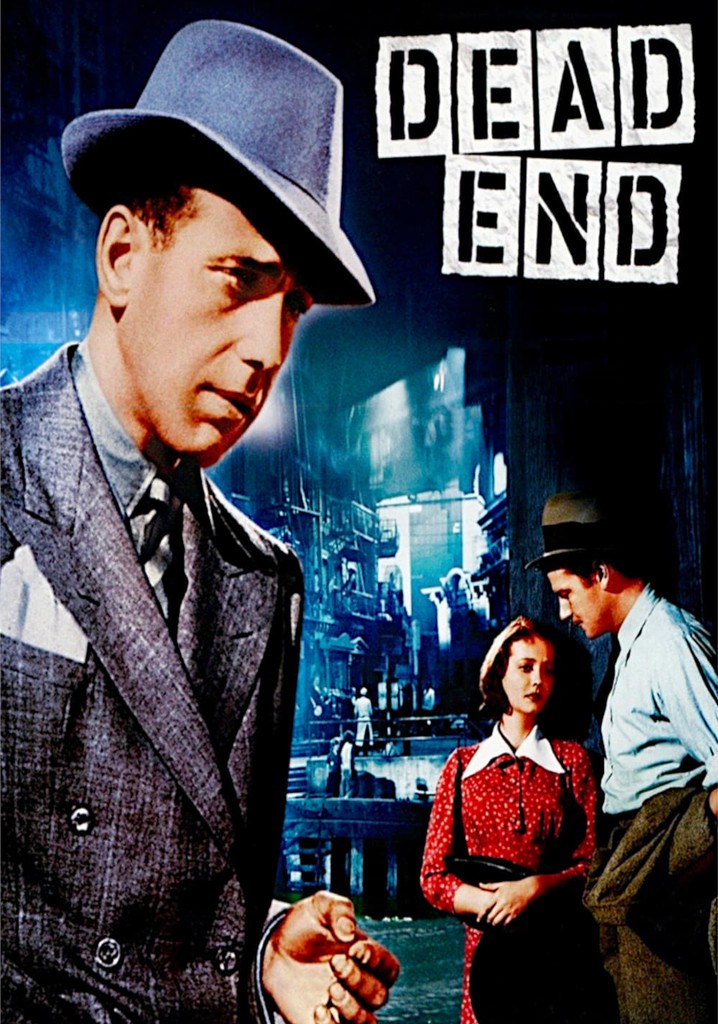Dead End 1937: A Cinematic Masterpiece That Defined An Era
Dead End 1937 is a film that continues to captivate audiences with its powerful storytelling and groundbreaking portrayal of social issues. This movie, directed by William Wyler, not only entertained but also challenged societal norms. Its ability to address the struggles of urban life and the challenges faced by the underprivileged remains relevant even today.
Released in the heart of the Great Depression, Dead End 1937 stands as a testament to the power of cinema to reflect and influence society. It tells the story of a group of children growing up in New York's slums and their interactions with the world around them. This film was groundbreaking for its time, setting the stage for future works that tackled similar themes.
What makes Dead End 1937 particularly compelling is its ability to blend drama with social commentary seamlessly. The film explores themes of poverty, crime, and the cycle of despair that affects the lives of those trapped in urban ghettos. This article will delve into the history, significance, and lasting impact of Dead End 1937, providing readers with a comprehensive understanding of this cinematic classic.
Read also:Sunflower Web Series A Captivating Journey Into Love Life And Family
Table of Contents
- The History of Dead End 1937
- Cast and Characters
- Key Themes in Dead End 1937
- The Impact of Dead End 1937 on Cinema
- Critical Reception and Legacy
- Subplot: The Dead End Kids
- Production Challenges
- Cinematography and Direction
- Social Commentary
- Cultural Relevance
The History of Dead End 1937
Dead End 1937 was adapted from a Broadway play written by Sidney Kingsley. The film premiered on July 30, 1937, and quickly became a sensation. Directed by William Wyler, the movie was produced by Samuel Goldwyn, a renowned figure in Hollywood. Its production was a collaborative effort involving some of the most talented individuals in the industry, ensuring that it would become a landmark in cinematic history.
Subplot: The Dead End Kids
A significant aspect of Dead End 1937 is the introduction of the "Dead End Kids," a group of young actors who went on to achieve fame. These actors portrayed the children living in the slums and became a cultural phenomenon. Their performances brought authenticity and depth to the film, capturing the struggles of urban youth with remarkable precision.
- Billy Halop as Tommy
- Huntz Hall as Angel
- Gerry Carroll as Pep
Cast and Characters
The film featured an ensemble cast that included prominent actors of the era. The combination of seasoned professionals and newcomers created a dynamic and engaging experience for viewers. The characters were complex, reflecting the realities of life in the slums.
Production Challenges
Producing Dead End 1937 was not without its challenges. The film's gritty portrayal of urban life required a level of authenticity that was difficult to achieve. The production team had to recreate the slum environment meticulously, ensuring that it accurately represented the struggles faced by its inhabitants. Additionally, casting the right actors to bring the characters to life was crucial for the film's success.
Key Themes in Dead End 1937
Dead End 1937 explores several key themes, including poverty, crime, and the cycle of despair. The film delves into the harsh realities faced by those living in urban ghettos, highlighting the lack of opportunities and the systemic issues that contribute to their plight. It also addresses the concept of redemption and the possibility of breaking free from the constraints of one's environment.
Cinematography and Direction
William Wyler's direction and the cinematography of Tony Gaudio played a vital role in bringing Dead End 1937 to life. The use of light and shadow, combined with the carefully constructed sets, created a visually stunning portrayal of the slums. Wyler's attention to detail ensured that every scene conveyed the intended message, enhancing the film's impact.
Read also:Poldark Tv Cast A Comprehensive Guide To The Stars Behind The Cornish Saga
The Impact of Dead End 1937 on Cinema
Dead End 1937 had a profound impact on the film industry, influencing future works and setting new standards for social realism in cinema. Its success paved the way for other films to tackle challenging subjects and address societal issues head-on. The film's innovative approach to storytelling and its commitment to authenticity inspired generations of filmmakers.
Social Commentary
At its core, Dead End 1937 is a powerful social commentary. It sheds light on the struggles faced by the underprivileged and challenges viewers to consider the systemic issues that perpetuate poverty and crime. The film's ability to provoke thought and encourage discussion about these critical issues is a testament to its enduring relevance.
Critical Reception and Legacy
Upon its release, Dead End 1937 received widespread critical acclaim. Critics praised its bold approach to storytelling and its willingness to tackle difficult subjects. The film was nominated for seven Academy Awards, further cementing its place in cinematic history. Its legacy continues to inspire filmmakers and audiences alike, serving as a reminder of the power of cinema to effect change.
Cultural Relevance
In today's world, the themes explored in Dead End 1937 remain as relevant as ever. Issues such as poverty, crime, and social inequality continue to affect millions of people worldwide. The film's ability to resonate with audiences across generations highlights its significance as a cultural artifact. It serves as a call to action, encouraging individuals to address these pressing issues and work towards a more equitable society.
Conclusion
Dead End 1937 is a timeless masterpiece that continues to captivate audiences with its powerful storytelling and social commentary. From its groundbreaking portrayal of urban life to its lasting impact on cinema, this film remains a cornerstone of the film industry. Its ability to address critical issues and provoke thought makes it a must-watch for anyone interested in the power of cinema to effect change.
We invite you to share your thoughts and experiences with Dead End 1937 in the comments section below. Additionally, explore other articles on our site to deepen your understanding of cinematic history and its impact on society. Together, we can continue the conversation and work towards a brighter future for all.
References
- Kingsley, Sidney. "Dead End." Broadway Play, 1935.
- Wyler, William. "Dead End 1937." Samuel Goldwyn Productions, 1937.
- IMDb. "Dead End (1937)." Accessed October 15, 2023.
- American Film Institute. "100 Years...100 Movies." Accessed October 15, 2023.
Igor Movie 2008: A Unique Animation Film That Captures The Heart
Andrew Barth Feldman: The Rising Broadway Star You Need To Know
Tracker Episode 11: A Detailed Guide And Analysis


